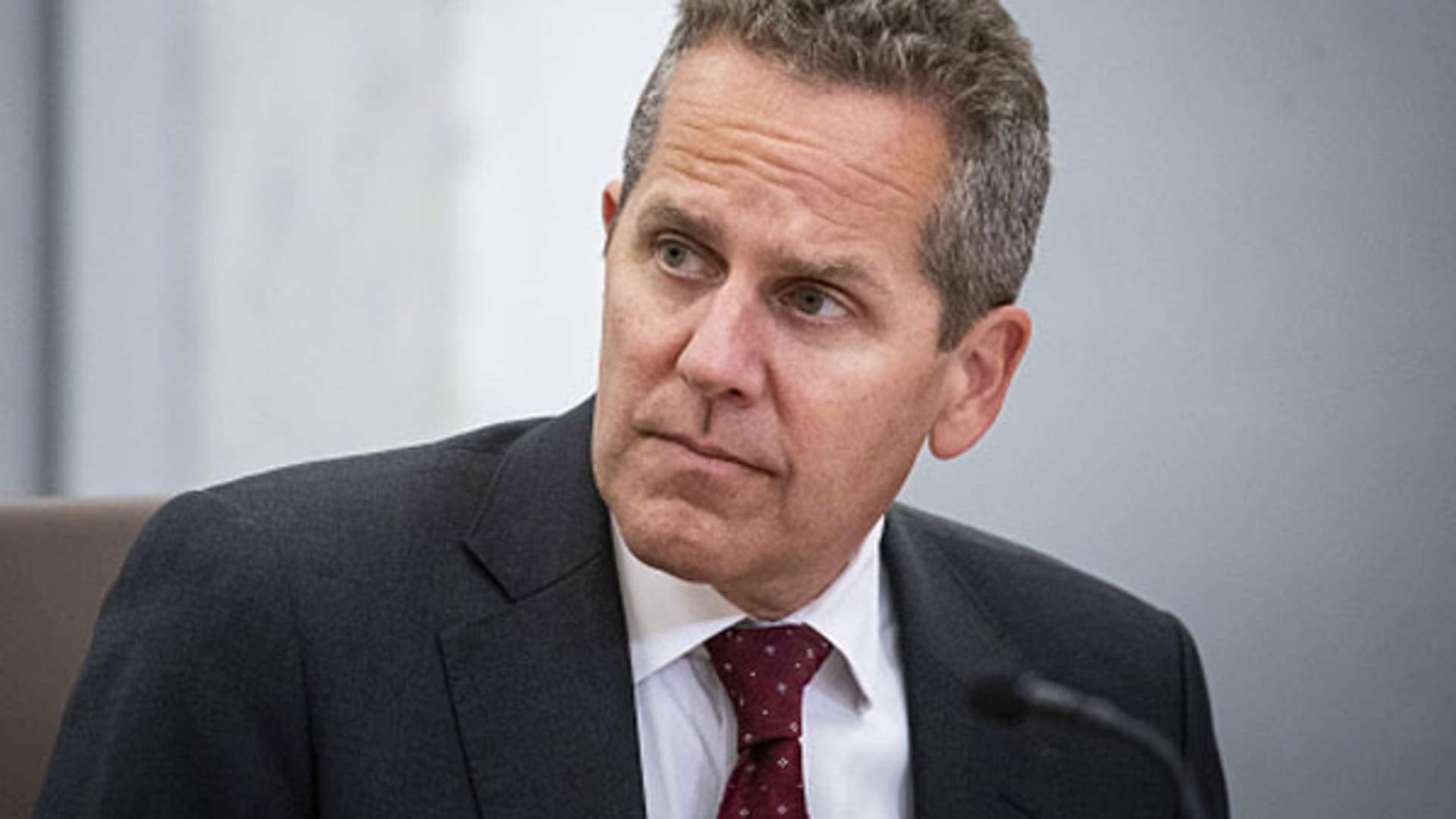The Federal Reserve’s top banking regulator said Monday that the failure of Silicon Valley Bank was due largely to mismanagement, though he noted that regulation and oversight also need to step up.
Fed Governor Michael Barr, the central bank’s vice chair for supervision, insisted in prepared remarks to two congressional panels that regulators had noted issues with SVB’s risk management, but the bank was too slow to respond.
“To begin, SVB’s failure is a textbook case of mismanagement,” he said. “The bank waited too long to address its problems, and ironically, the overdue actions it finally took to strengthen its balance sheet sparked the uninsured depositor run that led to the bank’s failure.”
Barr is to address the Senate Banking Committee on Tuesday, followed by an appearance before the House Financial Services Committee on Wednesday.
The Fed is conducting a review of the SVB collapse with findings set to be released May 1.
“I am committed to ensuring that the Federal Reserve fully accounts for any supervisory or regulatory failings, and that we fully address what went wrong,” Barr said.
FDIC Chair Martin Gruenberg also released his remarks Monday. He, too, noted the importance of a close look at how both SVB and Signature Bank failed and the implications for regulations and oversight.
“The two bank failures also demonstrate the implications that banks with assets over $100 billion can have for financial stability,” Gruenberg said. “The prudential regulation of these institutions merits serious attention, particularly for capital, liquidity, and interest rate risk.”
He further noted that the financial system faces “significant downside risks from the effects of inflation, rising market interest rates, and continuing geopolitical uncertainties.” He cautioned that more Fed rate hikes could increase the kinds of unrealized losses that catalyzed the recent banking stress.
Along with the examination into what happened specifically with SVB, Barr also noted that the probe will examine whether the Fed’s testing of risk was adequate.
He pointed out that the supervisors identified problems with SVB’s liquidity risk management as far back as late-2021. The following year, regulators continued to point out issues and lowered the bank’s management rating to “fair.”
Along with that, Fed officials received a presentation in mid-February on the risk that rising interest rates, implemented by the central banks, were having on bank operations. Still, Barr said the review will exam whether standards should have been tighter.
“Specifically, we are evaluating whether application of more stringent standards would have prompted the bank to better manage the risks that led to its failure,” he said. “We are also assessing whether SVB would have had higher levels of capital and liquidity under those standards, and whether such higher levels of capital and liquidity would have forestalled the bank’s failure or provided further resilience to the bank.”
SVB failed after a run on deposits revealed a duration mismatch in the bank’s bond portfolio. Specifically, the bank was holding long-dated securities that fell in value as yields increased. When it had to sell some of those asset at a loss to cover deposit withdrawal demands, it triggered a further run and ultimate failure.
Barr said the Fed will be looking into changing rules for long-term debt at institutions that aren’t deemed systemically dangerous. Part of the review also will look at whether more stringent standards would have pushed SVB to have a better handle on its liquidity risk.
Beyond that, Barr said he views the health of the banking system in general as “sound and resilient, with strong capital and liquidity.”






